The Evolution of First Person Shooter (FPS) Games
One of the most popular types of video games is the FPS or first-person shooter. According to a global gamer survey held in 2020, the second most popular genre was shooter games, with 50.5 percent of respondents stating they’d played shooter games in the past year. The market for FPS games has also steadily risen over the last decade.
But what exactly are FPS games?
The First-person Shooter or FPS is a subgenre of action-packed shooter video games typically centered on combat involving guns and other weapons that fire projectiles from a first-person perspective. These games are often an entry point into video games these days, with games like the Call of Duty and Halo franchises which are huge hits for both console and PC, or games such as Counter-Strike: Global Offensive, which has retained its massive fanbase and popularity over the past decade and thrived as an Esport. Why are these games so popular though?
For those who enjoy the thrill of shooting guns and immersing themselves in a virtual battleground, First-Person Shooters are where it’s at. It’s not just for the gun-nuts though — FPS games test your ‘gamer instincts’. The quickness of your reflexes, your awareness of the environment, and how well you coordinate with your team — you’ll need all of these in spades to win.
Indeed, in one of our previous articles, we’ve gone into the motivations for people playing video games and FPS games manage to score solidly on multiple fronts. Let’s now take a look at how they came about.
The History of FPS Games
FPS games have been around for almost 50 years now. They’ve had their ups and downs but have almost always been popular.
The 70s
The first real attempt at an FPS game was in 1973 with Maze War being installed at the NASA Ames Research Center. Players could move through a 3D maze slowly, while also shooting other players who appeared as eyeballs. Sure, it didn’t look flashy, but it was new and the concept unprecedented.
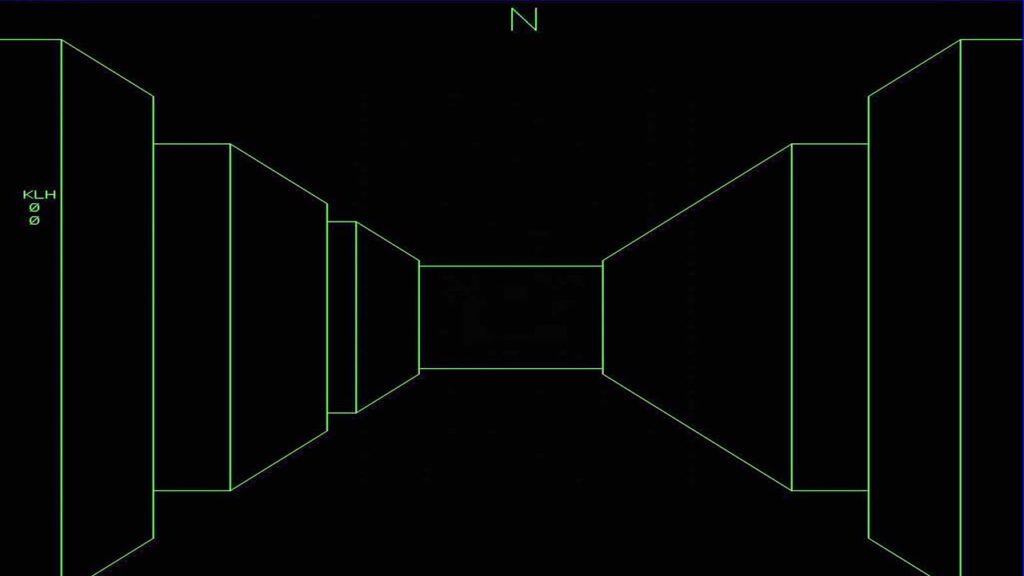
The 80s
In the 80s, arcades were the place for gamers to be, and the ancestors of today’s FPS games started popping up. The first of these was Atari’s Battlezone. This game allowed players to pilot a lethal assault tank moving across a (rather bland) landscape filled with enemies. You could rotate and move in any direction and blast the baddies away (as a tank should!) Battlezone was the first successful mass-market game (around 15,000 copies then which was a lot for that time!) featuring a first-person viewpoint and wireframe 3D graphics, with a version later released for home computers in 1983. Other games which resembled FPS games were Midway’s Wizard of Wor and Taito’s Gun Buster. The latter especially was interesting as you used a joystick for movement along with a light gun to shoot and aim. You could even network several cabinets together for a multiplayer deathmatch.
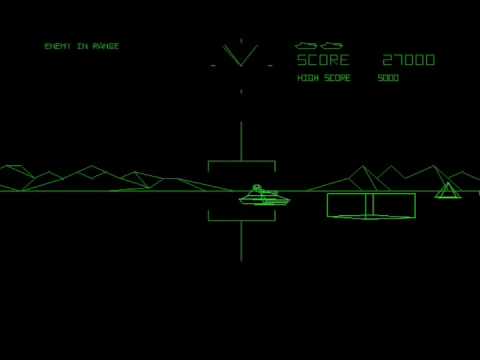
This era saw the rise of ‘home gaming’, with the advent of home computers and consoles. The fact that players no longer had a ‘timer’ on their game brought a lot of leeway when it came to designing games for the personal gaming market. More immersive and inventive approaches started taking off, even within the limited scope of FPS games. This was precipitated by Atari releasing a line of personal computers like the ST, STE, TT, and Falcon, with an increasing number of games being made for them. The first true PC FPS was Hybrid Arts’ Midi Maze, made for the Atari SD and released in 1987. Players became a Pac-Man-like orb in the game and were tossed into a maze where they could move around in whatever direction they wanted while shooting lethal bubbles at other similar-looking enemies. The key features of Midi Maze which made it fun were two things:
- Its networking capability: you could have as many as sixteen players in the same maze (although it was usually really laggy).
- Users could create their own mazes using an uncomplicated text editor.
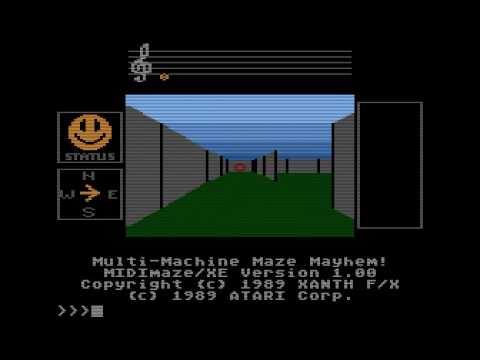
FPS trends during this era:
– The first FPS games involved basic tile-based movement where players could only move from one tile to another and turn in 90-degree increments.
– These early games were usually either grid-based or ray-casted, with games like Wayout using ray-casting technology to render the environment and wall segments relative to the player’s position and the angles they’re facing.
– One of the first-ever LAN games was MIDI Maze but it would take some time to cement the concept even though its multiplayer mode acquired a cult following.
The real transformation of the FPS subgenre came in the 90s though.
The Early 90s
You may have heard of a company called id Software. They arguably pioneered the FPS subgenre and gave it a lot of its key traits. John Carmack, their resident genius, made innovations that transformed the gaming industry as a whole. He figured out how to render 3D images as fast as 2D ones and created the concept of ray casting where the PC would draw only what the gamer could see rather than create the entire in-game world, making rendering speeds significantly faster.
Their first release was Wolfenstein 3D, the progenitor of all 3D shooters, where you play as William “B.J.” Blazkowicz, a gruff, shotgun-toting Jewish-American spy with a penchant for Nazi-killing. He was gaming’s equivalent to John Rambo, the quintessential one-man army – a trope that exists to date. The game forced players to stay constantly alert for enemies and the pace of the game was faster than any other game around at the time. It was a massive hit and basically ushered in an era for FPS games focussing on break-neck pace while also laying the groundwork for things like intricate level design and weapon functions which are now considered the industry standard.
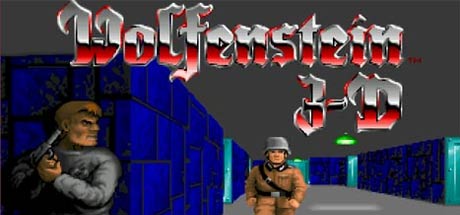
After the resounding success of Wolfenstein, id wanted to make something even more phenomenal, something faster, bloodier, and scarier. They had the technology: with John Carmack’s revolutionary engine, they could have different levels of light and illuminations, render surface textures, and create variable-altitude floors and ceilings. Thus was born Doom, the game which single-handedly transformed FPS gaming. The anticipation for the game was unprecedented. So many users were accessing the first FTP server where id Software planned to upload the game that they were unable to connect to it, forcing the administrators to kick all other users off to allow id to upload the game. When the upload finished thirty minutes later, 10,000 people attempted to download the game at once, crashing the network.
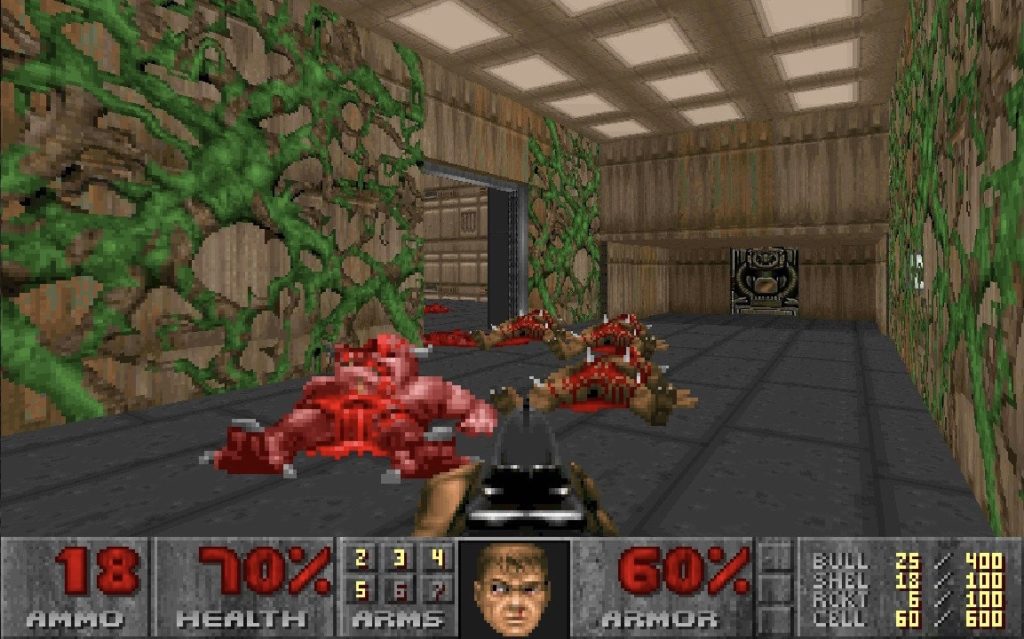
In Doom, you play as a space marine who endlessly fights with demonic enemies, each of whom has unique behavior and abilities. It had a visceral, fast, and loud soundtrack which made the game feel even more intense. Doom was not just a game, it was an experience. Nothing like it had ever been seen before and ‘Doom addiction’ got so bad that within hours of Doom’s release, work and university networks were banning Doom multiplayer games, as the massive number of players overwhelmed their systems.
id was happy to license their engine to other companies and a bunch of Doom clones began popping up, such as Raven Software’s Heretic, Rogue’s Strife, and notably, Bungie’s Pathways into Darkness. The latter melded Wolfenstein’s fast-paced shooting with running in a maze, along with an inventory system. The company’s next release allowed you to use two weapons, plus voice chat with fellow Marathoners over LAN. System Shock was a game that was also notable because it incorporated a more compelling narrative along with deeper immersion.
FPS trends during this era:
– Wolfenstein 3D is credited with inventing FPS games as we know them and creating a shooter game design template on which games are being based to date.
– The fast-paced gameplay in Doom, along with its music, created one of the most immersive games made at the time, to the extent of causing several clones based on Doom to be released.
– The concept of deathmatches (competitive matches between several players) was further developed in Doom, building upon the work done in earlier releases like MIDI Maze, and was the first achievement of multiplayer on a large scale.
– Doom also had really good graphics for the time, with variable-height floors and ceilings and even rudimentary lighting effects which found their way into several games going forward.
The Late 90s
Before we head into id’s next revolutionary release, a game to note was Duke Nukem 3D, because it was the first FPS that won acclaim for its highly-interactive environments, adrenaline-filled gameplay, and the way it made the protagonist a star, with Duke being voiced to sprout wise-cracks as he fought aliens.
Back at id though, John Carmack was hard at work. Computers at the time couldn’t render 3D game environments and players at the same time. Their next innovation, Quake, had a game engine that was nothing short of revolutionary – Carmack had found a way to render fully 3D maps, enemies, and power-ups with zero limitations regarding angles or surface heights/lengths. id had also hired Trent Reznor of Nine Inch Nails fame to compose the music for Quake. It pioneered unique and innovative movement options for the player with bunny hopping or strafe jumping, letting players move faster, as well as the new mechanic of ‘rocket jumping’, where players used the reaction force from explosive weapons to launch themselves higher. It was a massive hit. Quake also had various multiplayer options including Online Multiplayer after the QuakeWorld update. Multiplayer Quake could be considered one of the first massive competitive games and a precursor to modern-day esports.
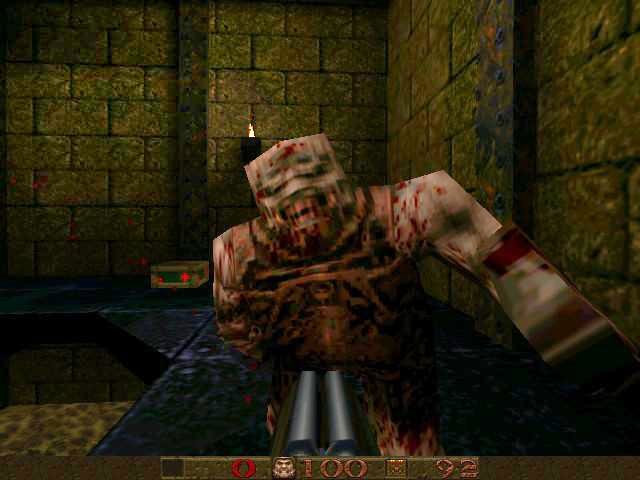
Competitive multiplayer gaming became huge: with the improvement of internet infrastructure, online gaming was getting more popular. Epic’s 1999 release of Unreal Tournament was one of the first purely-multiplayer FPS games. There was a single-player mode where people could train against bots but the core of the game was online and LAN play. id released Quake III: Arena a few months later that year. It was a multiplayer FPS as well and focused on open arenas and quick movement as key mechanics.
Two more games that changed the nature of FPS games are Rainbow Six and Counter-Strike. They might not have been the first of their kind but they are the most well-regarded and culturally prevalent examples. The former is notable because it was one of the first shooters to focus on tactics reminiscent of real-life police/SWAT officers and Special Forces. It put the player in the shoes and the mental space of these specialists, and needed you to calculate your resources, plan your attack, and clinically neutralise enemies (or risk meeting a swift end). It eschewed the fast run-and-gun mechanics of Doom and Quake. Counter-Strike, originally released in 1999 as a mod for Half-Life (which we’ll talk about next), was one of the first popular objective-focused, multiplayer FPS games where there was no respawn mechanic mid-round. This meant that every play, every decision made by you and your teammates mattered more. This focus on teamwork and efficiency is why it was one of the first FPS mainstream tactical esport titles, and why it belongs in the pantheon of all-time great video games.
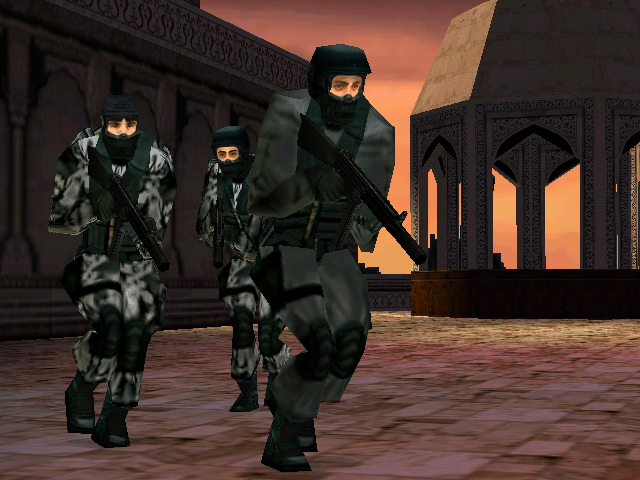
Most of the core mechanics of the FPS genre were established around now, with future games focusing on improving upon these mechanics, making games more immersive, and tailoring better user experiences. An example of this would be Valve’s Half-Life, released in 1998. You played Gordon Freeman, an unassuming physicist who has to escape a lab teeming with hostile aliens. The game puts you in a smooth and seamless world, with the story conveyed through the characters and the environment, eschewing cutscenes. The rich, linear-but-curated player experience it provided created a new niche for FPS games.
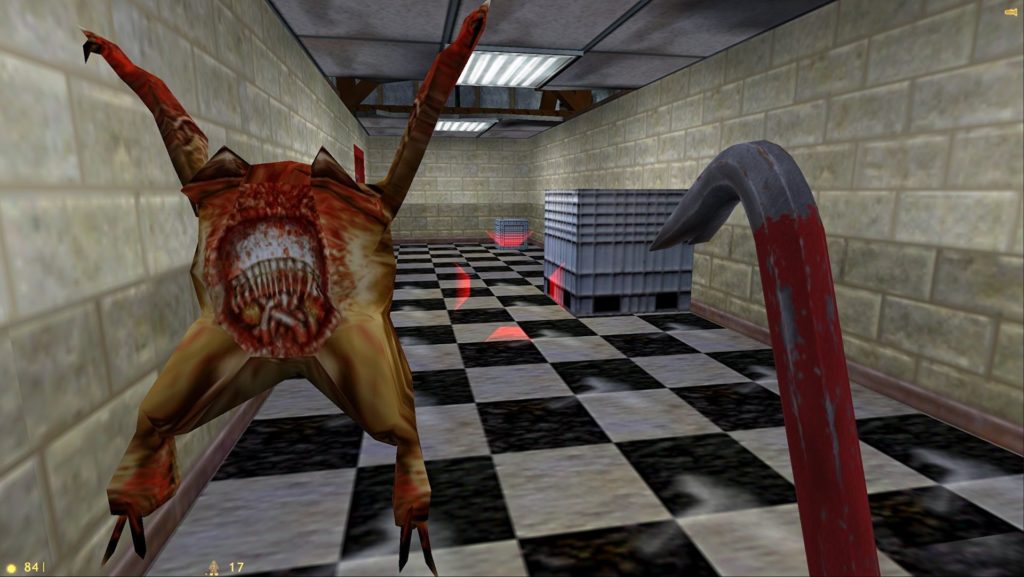
Next came System Shock 2, where you not only gunned down your enemies with abilities and weapons alike but also questioned who exactly they were in a morally grey world. The System Shock series eventually inspired the modern Bioshock series. One more important game in this era is the 1997 release of Rare’s GoldenEye 007. It was one of the best games made exclusively for Nintendo Consoles. It proved that FPS games could work on consoles as well and lots of aspects of its game design such as controls and modes are considered fundamental building blocks to future console and PC FPS releases.
FPS trends during this era:
– Duke Nukem and its sequels won acclaim for their interactive environments and a huge buff to movement freedom with the protagonist being able to fly with a jetpack. It also was noted for the titular character itself who was programmed to have a funny personality that appealed to players.
– Quake was the first FPS to feature 100% 3-dimensional maps, enemies, and powerups with no limitations on angles or surface lengths.
– Quake also focused on online gaming and pioneered different types of game modes that are used in FPS games to date.
– LAN parties became a mainstay of gaming culture, and events such as QuakeCon — where players came to fight it out and prove they were the best — were pioneered by Quake.
– Tactical FPS games, which were more cerebral than Quake and also didn’t have player respawns, started gaining popularity. Case in point: Counter-Strike.
– Several advancements in video-game storytelling were pioneered in games like Half-Life, using environments and an intricately designed linear player experience, creating a new niche of narrative-based FPS games.
2000s
Half-Life cemented the popularity of FPS games that focused on a deep narrative along with game mechanics. A lot of the games released during the early 2000s were of this type and they usually ran on either the Quake III engine or the Unreal Engine. Some of these include Medal of Honor: Allied Assault and of course, Call of Duty. The latter game, released in 2003, received critical acclaim and won several Game of the Year Awards. Its increased emphasis on team-based gameplay as opposed to mere single-player combat made it a pioneer. In particular, 2007’s Call of Duty 4: Modern Warfare was a resounding success. This was a result of its strong storyline which showed the gaming world a realistic portrayal of war ripped straight from newspaper headlines. Its graphics were leaps and bounds ahead of its rivals, you used modern weaponry (not just guns, mind you), in true-to-life scenarios, and it struck the right emotional chords. Initial titles were known for their realism but the newer releases of the game focus on futuristic movement abilities for soldiers. The series is just as popular though, if not more so.
In 2001, Halo: Combat Evolved was released on the Xbox and received tremendous acclaim for its characters, narrative/worldbuilding, and in-game dialogue. This was a game that pioneered the release of future FPS multiplayer games for consoles and had to change features to make the game fun for the controller. Changes included players only being able to carry around two weapons to make switching between them with just one button viable, and automatic saves at certain locations or plot points (called ‘checkpoints’ — this term became a very popular descriptor for similar mechanics). Another introduction was that of “regenerating shields/health”, a game-changing mechanic that players adored and one that became commonplace in modern FPS games, which let players fall back from combat and heal up a bit. Halo helped standardise a lot of mechanics that modern gamers take for granted, and was a milestone for both FPS games and console shooters as a whole.
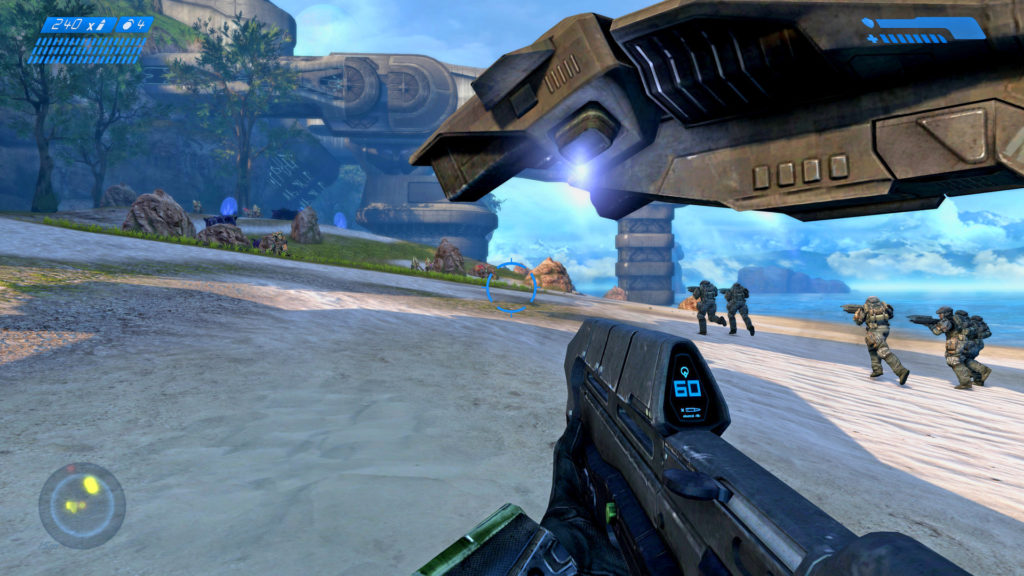
Complex multiplayer games like Battlefield and Call Of Duty, apart from just standard firearm-based combat, also introduced aspects like tanks and planes which added an element of realism for the players and helped better represent the various aspects of warfare and the historical timeframe in which these games were set.
The next development was the release of Far Cry in 2004, which popularised open-world designs and increased environmental detail and graphic quality. Far Cry 2 took this to even more realistic levels, where the open world was almost alive and responded to player behaviour- players could get ill or injured, wildfires spread as they did in nature, and the enemy AI was quite realistic. Doom 3 came out a few months later and was a bestseller. It too focused on innovative graphic effects and advanced lighting to make the game even scarier. Half-Life 2 won 39 Game of the Year awards and consisted of similar high-quality graphics, lighting, and shading effects.
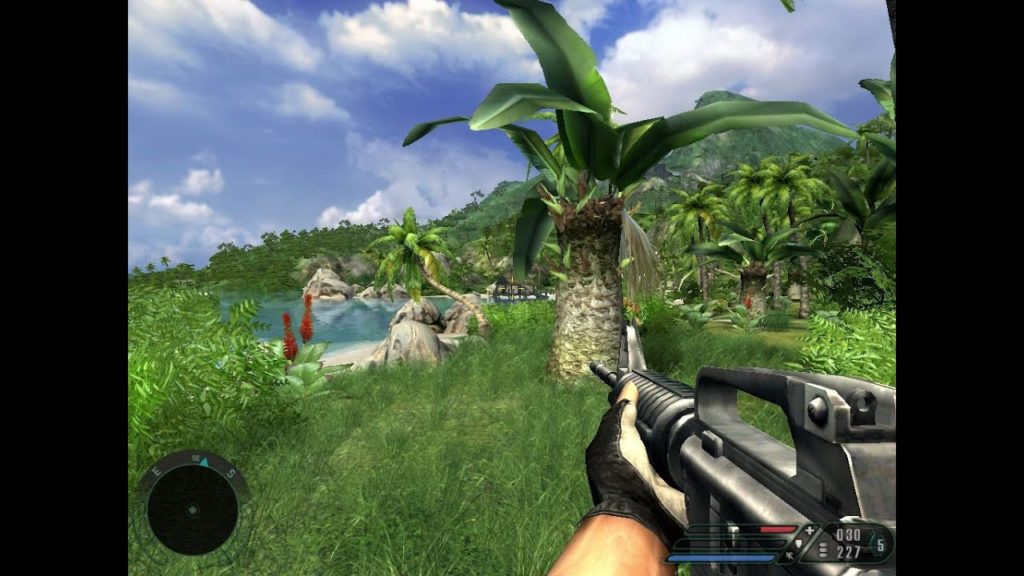
Halo 2 was released in 2004 as well and with the improvements in internet infrastructure, it made online multiplayer gaming extremely popular on consoles through Xbox Live. Several new games were released in the next few years, all heavily influenced by Halo and its mechanics and features. Halo pioneered redesigned menus, simplified console controls, and mechanics like switching quickly between 2 weapons, checkpoints, and automatically regenerating health. Most new console FPS games have been released with these features as well.
FPS trends during this era:
– Halo made console FPS games mainstream and came up with the features and mechanics which made FPS games fun and viable to play on consoles. It redesigned menus and simplified controls. The mechanics from Halo are in use to date.
– The Call of Duty games increased emphasis on team-based gameplay as opposed to mere single-player combat caused a massive surge in multiplayer FPS games’ popularity. Its realistic single-player campaign was a huge success as a result of its realistic portrayal of war.
– Co-op games where you could enjoy slaying zombies with your friends like Left 4 Dead were really popular. FPS games that told a great story also gained traction. While not exactly an FPS, Portal was a great example of a game where you used your non-lethal portal-creating gun (also called the Aperture Science Handheld Portal Device) to solve puzzles in a bid to escape a laboratory.
2010s
Post the 2000s, several new kinds of games began popping up. The first of these was Looter Shooters, which became famous for their inclusion of procedurally-generated, ever-changing, ever-improving weapons and other loot such as armour or weapon parts. These games ensured extremely fast gunplay and led players to develop a grind-focused mindset. They combine long-term character growth and the satisfaction of upgrading your gear along with intense high-adrenaline shooter gameplay. These games not only involve killing your enemies but also rewarding players with better loot and abilities, which wasn’t the case in the ol’ Halo and Call of Duty days. In 2007, Hellgate: London (not a pure FPS but it could be played in both third and first person) was released and while it received mixed reviews, it showed the gaming community how rewarding getting good in-game loot could be.
In 2009, Borderlands was released and they had everything nailed down. Whether it was the standout cel-shaded art, amazingly fun music, great shooter mechanics, and of course, the wacky fun loot available, it was the first successful looter-shooter and paved the way for the genre. Borderlands 2, released in 2012, was the game to perfect this subgenre and received universal acclaim for everything: the loot, shooter mechanics, the funny and enrapturing story, and phenomenal visual design.
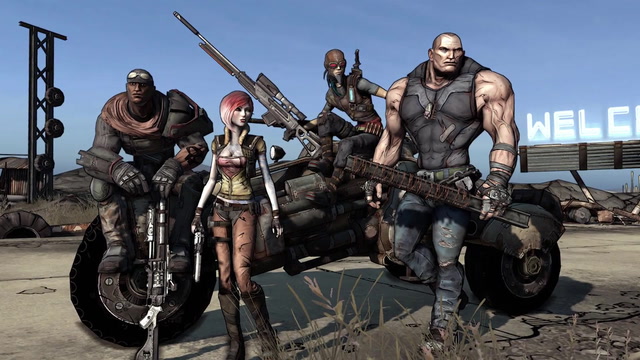
Apart from the Borderlands series, another iconic looter shooter is Warframe. The game’s release was rather unremarkable but its continual release of new content expansions has kept it popular to date. Warframe was one of the first truly successful “games as a service” or GaaS shooter titles and paved the way for one of the most popular online shooters of all time – Destiny – made by the same folks who made Halo. GaaS games allow developers to constantly update the in-game content, so the players can get more out of it.
Destiny was also a GaaS release and was an online multiplayer FPS title. It had features such as Clans, which you could be a part of and participate in raids, strikes, and other timed events, as well as centralised hubs where you could meet other players to become friends. All these features were trademarks of MMO/MMORPG games which FPS games successfully incorporated. Destiny was a pioneer for purely online multiplayer FPS games and GaaS titles. They also consistently released expansions based on player feedback and created content they loved. However, it didn’t get any significant improvements till Destiny 2 was released in 2017. It was known to respond quickly to community feedback regarding game balance, combat, and other aspects.
Another subgenre of FPS games that gained great popularity during this time period was the Hero Shooter, which is a variation of multiplayer shooters where players choose from pre-designed “hero” characters that possess unique attributes, skills, weapons, and other activated abilities, to form two or more teams (this feature was borrowed from MOBAs). This type of game also strongly encourages teamwork between players on a team, from selecting effective combinations of hero characters to coordinating the use of hero abilities during a match. Because of the focus on heroes as distinctive characters, this sort of game will often provide backstories for each character as well as the world(s) the game is set in, and tend to have distinctive character design. Players often choose to play a certain hero simply because they find their character and design appealing. While Valve’s Team Fortress 2 is often considered the first good example of a stepping stone between role-based shooters and a proper hero shooter, the subgenre didn’t achieve mainstream popularity until the release of 2014’s Overwatch. While the former was the first game to call itself a hero shooter, Overwatch was a resounding success. It assigns players into two teams of six, with each player selecting from a large roster of heroes, each with unique abilities. Teams work to complete map-specific objectives within a limited period of time.
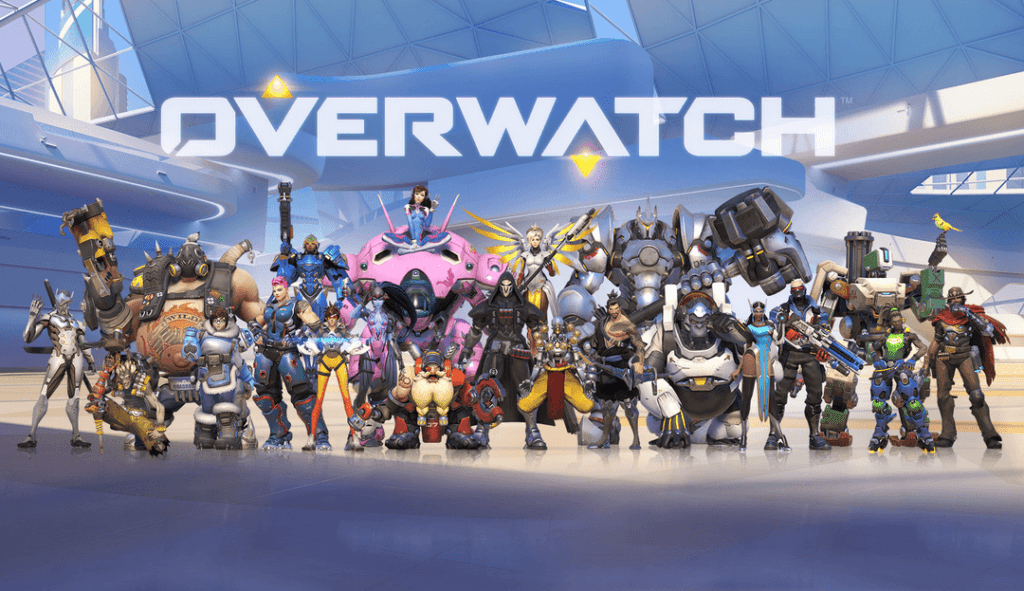
Other hero shooters which follow the key tenets of the subgenre and are extremely popular include Rainbow Six: Siege, Apex Legends, and Valorant. These games also focused on franchising and driving their esports scenes forward with both regional and international tournaments. They also released regular game-balancing patches, new agents and maps, and patch updates to ensure players’ concerns were being addressed. Communication between the game’s players and developers increased significantly with a key reason for this being social media. Some other key features of hero shooters include separate game modes for practice, casual play, and competitive ranked play. A lot of these games are also often free-to-play, with their revenue coming in through sales of cosmetic items such as weapons and hero skins. These do not affect gameplay but can make the game feel more personalised.
The Battle Royale sub-genre also deserves a mention here. It blends last-person-standing gameplay into online multiplayer games. They involve a dozen to even hundreds of players who start with minimal or even no equipment and have to scavenge for gear while eliminating other opponents. To ensure players keep encountering each other, the play area continuously shrinks. The winner is the last player/team who remains alive. The subgenre started off as mods for Minecraft but gained popularity with games like H1Z1 and DayZ. It became a phenomenon with the release of PUBG: Battlegrounds. It was a huge hit because of several reasons. The games were quick and addictive and there were several ways to win. You could try and kill everyone or sneak in on people already fighting and take them down. The thrill of finding and looting gear was part of PUBG’s success. It also appealed to those with the competitor instinct: the idea of being the last person standing amidst a hundred people sounded great to them. The fairness aspect comes into play as well, with players starting with the same gear. However, the randomness faced while finding loot makes it truly egalitarian. Other FPS titles which are successful battle royale games include 2017’s Apex Legends and 2020’s Call of Duty: Warzone.
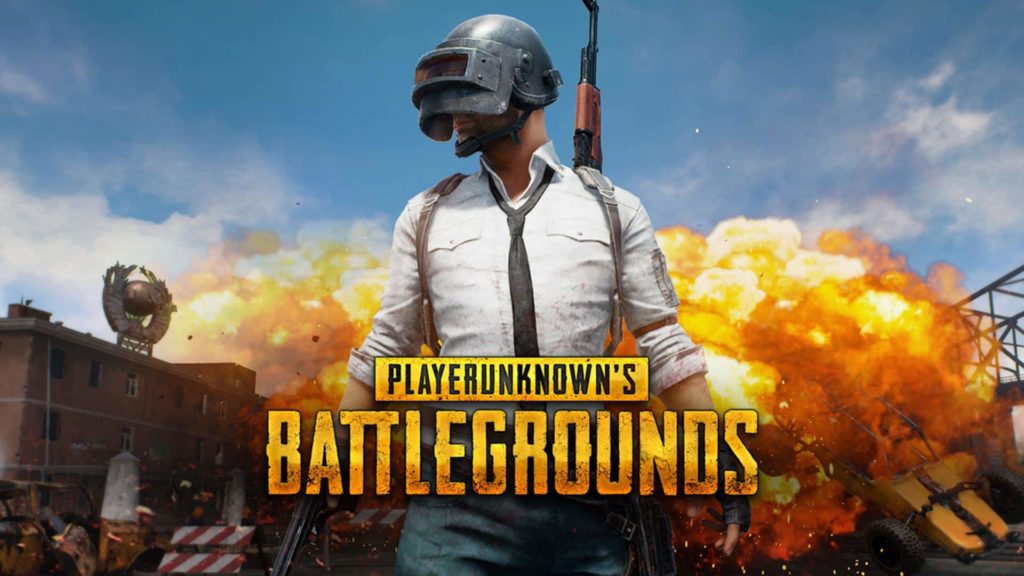
Finally, FPS games are extremely popular in the competitive world of esports and online gaming. They saw an uptick in popularity when LAN networks, and later the Internet, opened up multiplayer gaming and made it a social phenomenon. Since the early 2000s, internet capabilities have exploded and computer processor technology has improved at an extremely fast rate. 3.2 billion people across the globe have access to the Internet and at least 1.5 billion people with the Internet have access to and play video games. You can also read about how esports has exploded in popularity in our previous blog.
FPS trends during this era:
– Games became increasingly mixed when it came to the FPS subgenres like looter shooters, hero shooters, and battle royale games gained massive followings.
– The GaaS revenue model became popular, with more and more games being free to play and gaining revenue from in-game merchandise.
– Online multiplayer FPS games have seen massive investments when it comes to esports with both local and national events often being organised by game publishers.
– Streaming FPS gameplay and live tournaments have become a legitimate living and have further popularised online gaming culture.
– Other popular FPSes which have to be mentioned for their popularity and/or achievements include Day-Z, Titanfall 2 (a cult classic), Bioshock Infinite (a watershed moment for narrative FPS), Portal 2 (one of the most successful puzzle FPS games), Superhot, and Bulletstorm.
– Releasing new content, patches for balancing the game, and growing an interactive community was done successfully by Destiny, and other games are following suit.
How have FPS Games Evolved, and Where are they Heading?
FPS games have become a staple subgenre of games and for good reason. There are several reasons one might like playing them, ranging from wanting to shoot guns, playing with your friends, or slipping into a flow state and hitting your shots. The number of FPS games being released is steadily increasing and more than that, famous franchises like Halo, Call of Duty, or even the latest Quake game, Quake Champions, have no shortage of takers.
FPS games have steadily evolved over the decades and an increase in their complexity has gone hand-in-hand with the availability of better technonlogy. Early FPS games were made for systems with no graphic cards or drives- the concept barely existed then- and with low processing power. Graphics did get better over time and various improvements were made in the 70s and 80s, but in 1999, Nvidia released the first ‘real GPU’, the GeForce 256 which was the first in a long line of path-breaking GPUs to come. If you’re interested in looking at the evolution of graphics, this might help.
As innovations in both hardware and software came through, the mechanics, as well as the graphics of FPS games, have become increasingly complex. A great example of this was the fast inverse square root algorithm, most popularly used in Quake III Arena, which was one of the first FPS games to heavily use 3D graphics. This enables the computer to compute lighting and shading angles extremely fast and thus reduce the render time.
Further innovations such as the usage of AI in games have made the genre even more versatile. Several games use AI-powered bots to help players practise and improve their aim. In fact, one of the first FPS games to use clever AI is still remembered for it: Monolith Production’s 2005 F.E.A.R (First Encounter Assault Recon.) What makes it unique from other FPS games at the time is the AI opposing the player, which makes decisions quickly and accounts for the most minor player actions. For example, in the game, if a player takes cover behind a barricade, the enemy AI quickly processes this action and throws a grenade to eliminate the player. To be fair, in the past several years, several FPS games have shifted their focus to multiplayer (single-player campaigns are still going strong though). This has caused AIs being used to be fairly simple and used more for training than anything else.
With significant improvements in graphics coming every few years, whether it is more powerful graphic cards or better code, FPS games are looking increasingly polished. In fact, more and more strong narrative-focused FPS games are being released, mostly single-player, where a key selling point is the strength of the graphics. Games like Halo Infinite, Metro Exodus, and the Far Cry series are all examples of games that were resoundingly successful because of their brilliant characters, touching stories, and of course, gorgeous graphics.
FPS tend to mix mechanics to capture their audiences’ attention. A lot of initial games were run-n-gun shooters for instance. Another example of FPS games having multiple sub-genres is Apex Legends. While it is primarily an FPS game, it also falls under the categories of Hero Shooter and Battle Royale. Valorant is an FPS but is also a Hero Shooter and relies more on team coordination and tactical gameplay. Both of these games are also free to play, which is a trend we’re seeing games increasingly follow as they release as GaaS, opting to make their revenue off microtransactions and in-app purchases.
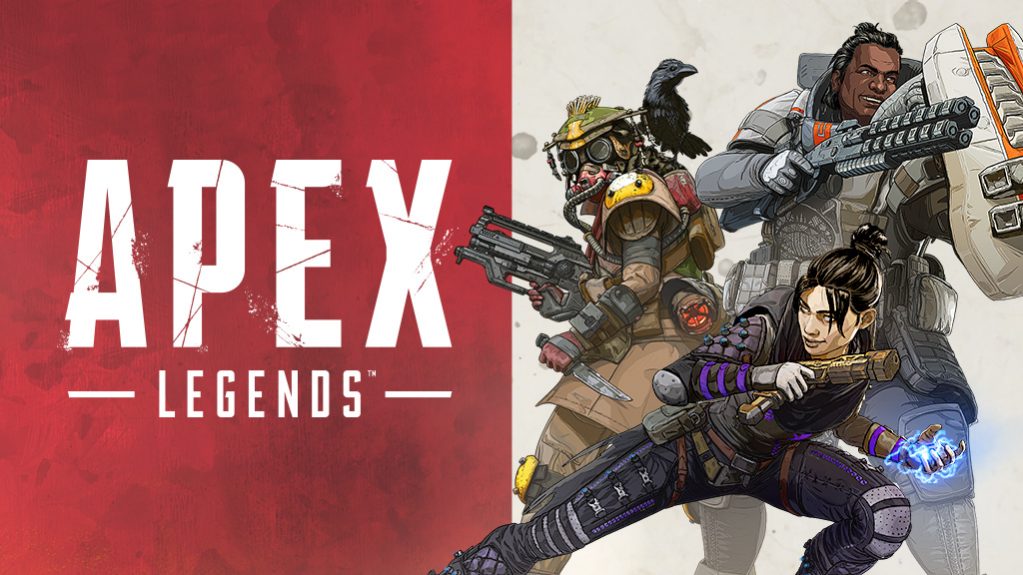
As for FPS games in the future, that’s going to depend on the innovations being made technologically. VR shooter games seem like they hold a great deal of potential. Half-Life Alyx’s immersive weapon handling, where your guns are assigned to one hand, lets you feel like you’re actually holding them. You’ll also be jumping in and out of cover when you’re in combat which encourages you to fully use your body and have an unprecedented and unique experience. Other innovations such as cloud gaming can help with playing single-person shooters which focus on narrative: they can render detailed and beautiful graphic worlds without players having to worry about buying expensive gaming hardware.
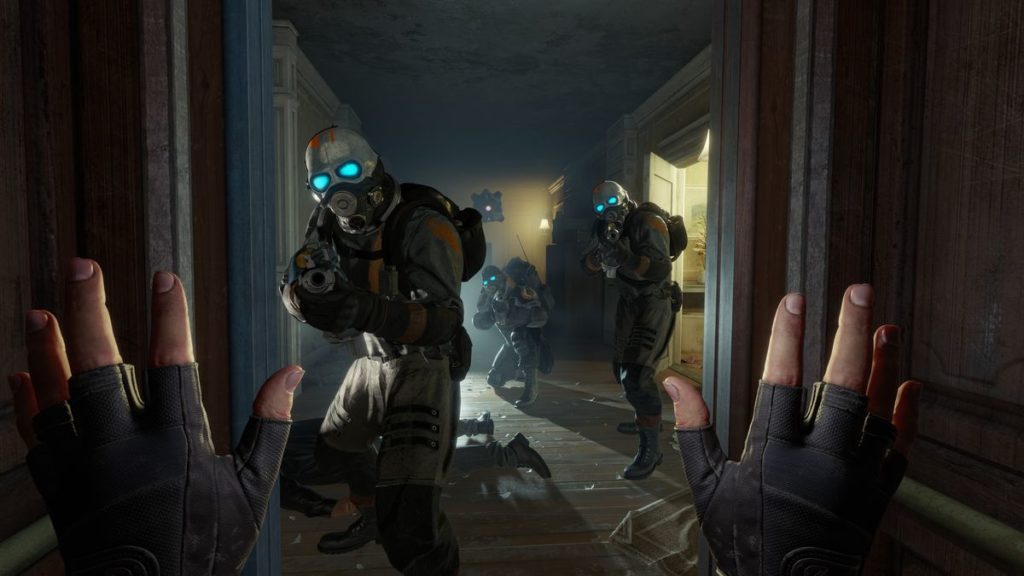
To sum up, the first-person shooter is a genre that seems like it’ll never go out of style- and with good reason. Even as mechanics and gameplay features have slowly stabilised, the scope for combining them with other genres and mechanics has increased. Modern FPS games are arguably the most diverse subgenre, they range from hyper-violent run-n-gun games like Doom: Eternal to tactical hero shooters like Valorant, and everything in between. The varying core motivations to enjoy playing them remain the same though.
We at Gameopedia specialise in collecting and curating the latest and best data and information about games. We work with clients across the industry on custom requests and can provide in-depth data on any subject related to FPS games. Reach out to us to get access to data that can empower you to new heights.
Featured image credits: Halo: Combat Evolved (Courtesy Xbox Game Studios)

